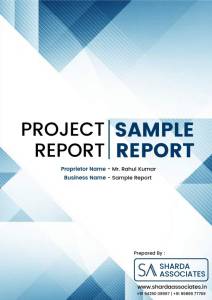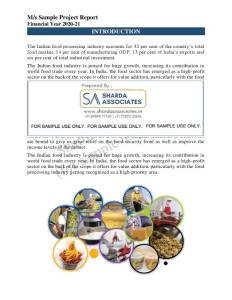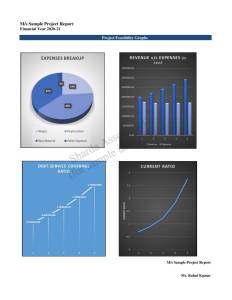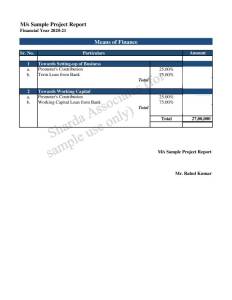Project Report For Meat Processing Unit
Introduction
Project Report For Meat Processing Unit is as follows.
The meat-processing sector consists mostly of establishments that slaughter various animal species, such as cattle, hogs, sheep, lambs, or calves, in order to obtain meat that can be sold or used on the same premises for many uses. Slaughtering animals, cutting the meat, examining it to verify that it is safe for consumption, packaging it, processing it into various products such as sausage or lunch meats, distributing it to stores, and selling it to customers are all part of the meat processing process.
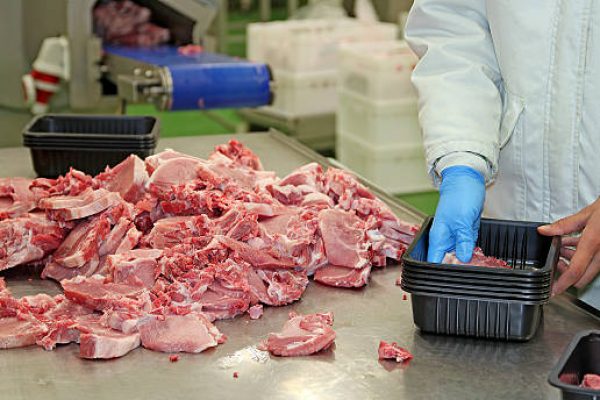
Equipment Used In Meat Processing Unit
There is a lot of equipment within a meat processing manufacturing unit, and while it varies in size and function, the majority of it is made of food-grade stainless steel to ensure it is safe and sanitary. The following are the basic pieces of equipment found in a meat processing plant:
Knives And Meat Saws :- Knives are the most basic piece of equipment found in a meat processing operation. Sharp knives are required for a quicker and safer process. If a butcher’s knife is dull, he or she may have to use greater force to complete the task, which can result in significant injury. Meat saws are commonly encountered in larger enterprises. These are enormous stainless steel saws with fine-toothed blades that can cut big animals into smaller pieces fast.
Meat Grinders :- Meat grinders are a common form of meat processing plant equipment that aid in the cutting, mixing, chopping, or mincemeat into smaller bits. Grinders produce ground beef that can be made into patties, sausages, or sold as-is for consumers to use as they see fit.
Slicers :- Slicers are machines that slice meat into various thicknesses. A slicer can produce deli meat, bacon, steaks, and pork chops, among other things. It can quickly produce evenly-sized slices of whatever you want, and automatic features help keep employees safe.
Smoker Curing Ovens :- A smoke curing oven is an expensive piece of equipment used in a meat processing business, especially when purchasing a high-quality oven. The plant’s smokers enable it to produce smoked and cured meat products such as gammon, bacon and jerky.
Coolers And Freezers :- Meat cannot be stored at room temperature since it will spoil, thus it must be stored at the proper temperature. Coolers and freezers are essential pieces of equipment in any meat processing factory, regardless of the size or type of meat products produced. They maintain products at the proper temperature to prevent spoilage, which can lead to the growth of hazardous microorganisms.
Meat Mixers :- Meat mixers are machines that combine meats and spices. Large amounts of ground beef for meatballs, sausages, patties, and other prepared meat products require this sort of mixer.
Market Potenial Of Meat Processing Unit
The global meat processing equipment market was valued at $12.3 billion in 2021 and is expected to reach $19.6 billion by 2031, increasing at a CAGR of 4.7% between 2022 and 2031.
The meat processing equipment market is predicted to expand due to changes in consumer lifestyle and tastes. Furthermore, the rise in demand for packaged meals and processed meat products, as well as the rise in demand for food safety, boost market expansion. Meat processing equipment is custom-made to meet the needs of the customer. These machines are used to eliminate contaminants and improve the consistency of meat.
The continued dominance of meat-based culture in many countries increases demand for meat processing equipment. Furthermore, increased meat trade flow has increased demand for processed meat with high durability and shelf life, which is projected to fuel market expansion. The high cost of machinery, on the other hand, is expected to stifle market expansion in the foreseeable future.
The processed mutton category has been increasing market share and is likely to maintain its share during the projection period. Because of the increased demand for processed meat internationally, the fresh processed meat and raw cooked meat segments are the market’s main investment buckets. Other aspects that drive the meat processing equipment market expansion include ease of handling, transportation, and storage.
Project Report Sample On Meat Processing Unit
Need Help?
Create 100% Bankable Project Report

